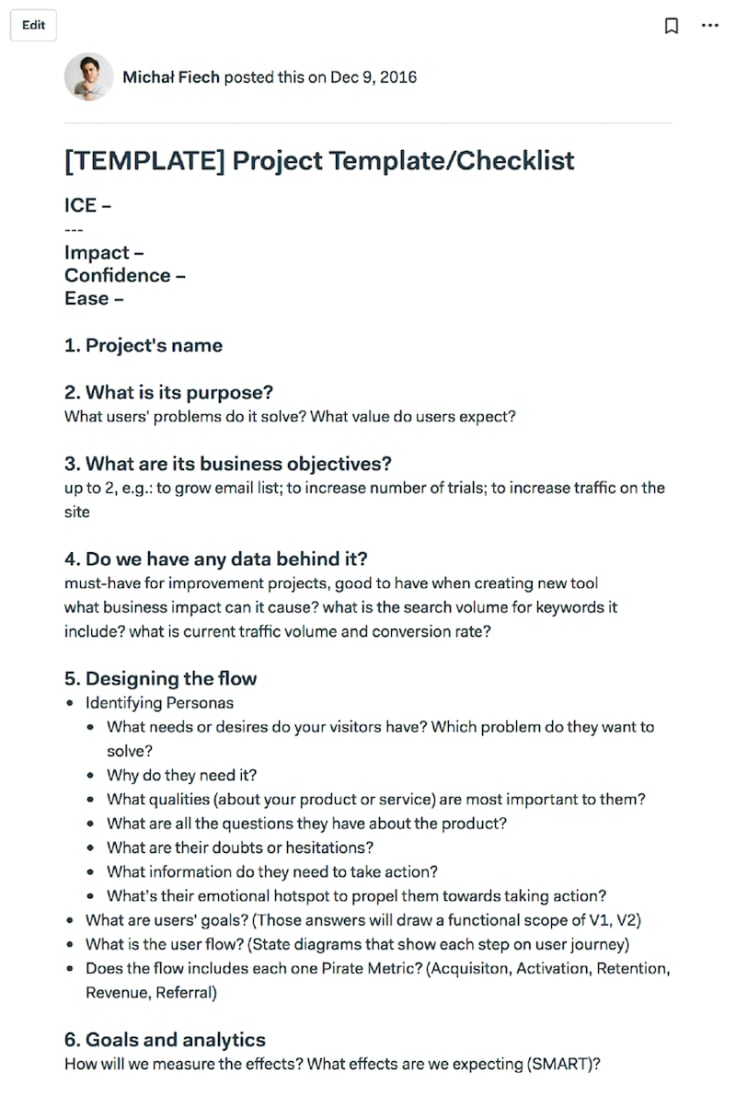Showing top 0 results 0 results found
Showing top 0 results 0 results found

For many people, “growth hacking” might sound like a buzzword. We constantly hear about growth hacking strategies, growth hacking experiments and growth hacking techniques, and the word itself gets more and more popular over time.
But is it a buzzword only?
It’s said that thanks to growth hacking, Facebook reached 500 million users. LinkedIn grew from 2 million to 200 million users by implementing a technique that allowed users to create public profiles. It helped Airbnb to grow into a billion-dollar business!
From today’s post, you’ll learn how to use growth hacking in your business, but first, let’s focus on what it is.
What is growth hacking
A growth hacker is a person whose true north is growth.
Sean Ellis
You cannot describe “growth hacking” without a proper understanding of a word “hacker.”
We used to think about hackers as outlaws who break the law and gain unauthorized access to data. It’s a narrow (and unfair) description, though. In a broader sense, a hacker is a person that knows a process very well and is able to find a “shortcut” to get things done faster. It's a person that uses clever marketing tricks to provide better user experience and gain more customers (speaking of which, have you already try LiveChat?).
For example, I wrote recently about how to hack your brain and get rid of bad work habits. I described the way our brain works and how it gets used to habit loops. Habit loops are certain processes that work in our brains, and when we are aware of them, we’re able to hack them, change our behavior and get the desired effect (for example, stop checking social media at work).
It means that hacking is not a criminal activity of suspicious individuals. Hacking is a wise approach to goals, and in most cases, it’s also an innovative way of getting things done.
So, what is growth hacking? It’s an innovative approach to growth. A growth hacker is a hacker whose goal is to grow the number of customers and bring more revenue to a company.
“What’s innovative about growth hacking’, you could ask. Isn’t marketing team responsible for the same thing? Why ‘growth hacking team’ needs this fancy name?
Well, a growth hacker is a hybrid of marketer and coder who based on data and endless tests, uses different marketing and product approaches to grow his business rapidly. He optimizes the value of each user on each step of user's journey.
“Rapidly” is the keyword. While ‘traditional’ online marketing is focused on gaining steady growth, growth hacker’s goal is exponential growth, or a ‘hockey stick’ if you like.
So, this is how sustainable growth looks like:

And this is growth that was hacked:

This is what growth hacking is about.
How does growth hacking work
Now, when we know what growth hacking is, time for “how does it work.”
My colleague, Michal Fiech, who’s the leader of LiveChat growth hacking team, gives it a very simple definition. If you want to start your growth hacking efforts, you should hire a T-shaped marketer, a web developer and have a proper mindset.
Who’s a T-shaped marketer? It’s a person that has knowledge covering a wide range of online marketing topics and has in-depth knowledge in 1 or 2 specific areas. It gives them the ability to understand the online world and marketing strategies, but at the same time to be an expert.
For example, Michal knows a lot about online marketing, but his specialties are SEO and analytics. An interesting fact is that when I asked him if he thinks he would be able to lead the growth hacking team without knowing these two areas, his response was immediate: ‘no way.’
That’s how he explained it:
“Organic traffic is one of the most powerful lead generation and acquisition channels at LiveChat by now, so without proper SEO knowledge, I'd waste that potential. But SEO is just another channel that can be used for acquisition, like PPC, Email or Communities – Analytics is THE ONE thing that puts all intact. Without it, you don't know where's the real problem, what should be fixed or if your action at the end brought growth. It's like playing hide'n'seek with Growth when it's not based on data and analytics.”
When we have a team of miracle makers, we shouldn’t be surprised when they sniff around and ask “how will it impact growth?” every time someone comes up with an idea.
And that’s how a growth hacking team works. They find opportunities for growth and break through the identified bottlenecks. Once one bottleneck is opened up, the team will focus on another bottleneck and begin the process again.
Here’s growth hacking process in steps:
- Generating ideas (everything that can help to increase growth),
- Organizing (estimating potential impact and resources required),
- Testing (working in quick iterations, testing everything they can),
- Analyzing (comparing results to hypothesis and asking “why”),
- Optimizing (using learnings to correct processes),
- Repeat.
Pirate metrics in growth hacking
There are a lot of possible ways to measure the success of business, but Michal suggests focusing on as called “pirate metrics” or “AARRR” metrics:
- Acquisition,
- Activation,
- Retention,
- Referrals,
- Revenue.
He thinks that a good growth hacker should ask a meaningful question to each of these metrics. Working on one at a time, you can focus on the most important parts of a business.

If you’re wondering how asking these questions can help you to hack growth, here are examples of successful growth hacking.
1. Acquisition: How do users find you?
One of the most famous growth hacks was done by Airbnb, a marketplace for people who want to list or rent short-term lodging. Now it’s a huge website, but back then it was struggling to get some attention and website visitors.
A growth hacking strategy the company decided to implement was the creation of an Airbnb - Craiglist integration.
The project was huge. There were so many technical problems that had to be resolved that traditional marketers wouldn’t be able to deal with them. Airbnb was able to do it though and, as it turned out, they broke the bank.
2. Activation: Do users have a great first experience?
In the beginning, when Twitter was just a small social platform, they struggled with the quality of traffic. Their problem was that although they had a lot of new users, they weren’t engaged enough to come back.
How the company solved this problem?
Twitter has slightly changed their onboarding process. They decided to force people to engage with their platform, so every time a new user was logging in for the first time, they had to follow ten accounts. As it turned out, this idea brought the expected results. People were more engaged and more keen to log in for the second time.
3. Retention: Do users come back?
Do you remember PokemonGo craze? The creators of this game made sure that people will be willing to come back and was giving extra XP to every user that logged in for a few days in a row.
4. Revenue: How do you make money?
One of the most remarkable growth stories was written by Spotify. In just six years the company is valued at more than $10 billion and has more than 50 million users, 12.5 million of which pay for the service.
There were a couple of growth hacking strategies helping them to grow that fast, but when it comes to revenue, there’s one simple trick: they earn money from premium and free users. Premium users pay for a monthly subscription, free users listen to advertisements.
5. Referral: Do users tell others?
Dropbox made it really easy for users to tell one another about the product and as a result, referrals increased Dropbox signups by 60%. For example, when one person who has Dropbox refers another, they both get a 500MB increase.
In case you’re wondering, Dropbox is now a $4 billion company.
How do I prepare a growth hacking project
Before the team starts to work on a project, the leader has to prepare a brief, so the whole team’s on the same page. A good brief should contain below elements:
- Project’s name/working title.
- What is its purpose?
- What are its business objects?
- Do we have any data behind it?
- Designing the flow (personas, user goals, user flow),
- Goals and analytics.
Here’s a detailed, universal template created by Michal, that will help you to understand every element of a brief. This template is universal and can be used to new tools and to optimize your website.

Of course, the more detailed your brief is, the easier it is to manage the project!
Growth hacking vs. traditional marketing
People who don’t understand what growth hacking is, very often think that it’s part of marketing strategy. It’s partially right because all marketing efforts are focused on growth.
A main difference though is based on analytical skills of a growth hacker, who understands not only the marketing side but also the technical side of a problem. Thanks to this, they can see more opportunities to hack growth and test new solutions that might increase conversions.
Among tactics that all growth marketers can use there are different types of viral acquisition, paid acquisition, customer service/sales strategies, content marketing, email marketing, SEO and A/B testing.
So if you want to start to work on growth hacking, remember: possibilities for development are endless, and it’s up to you which strategy you will choose.







Comments